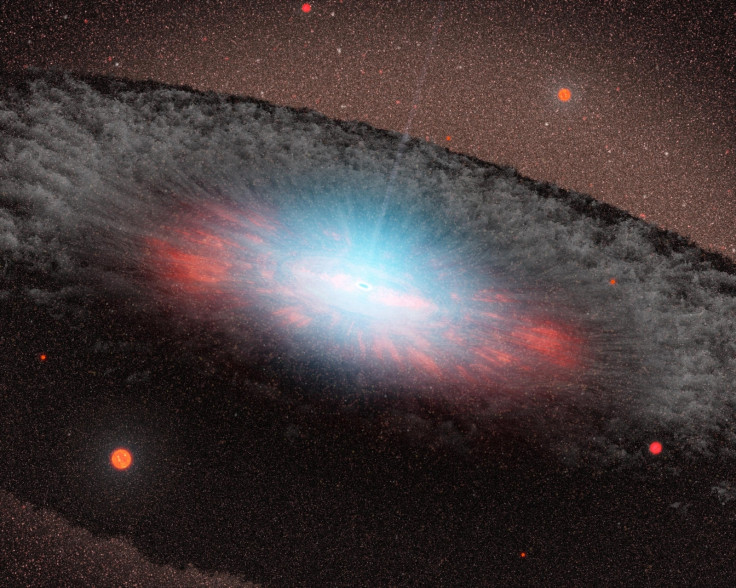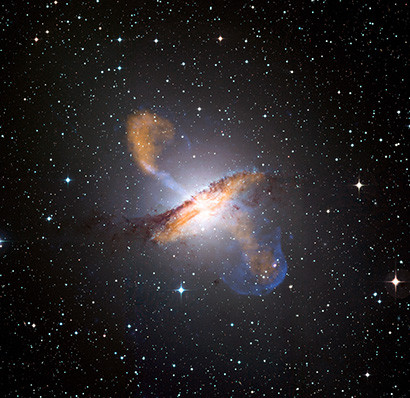First direct evidence that supermassive black holes control star formation in galaxies discovered
The new findings confirm a decades-old hypothesis.

Scientists have found the first observational evidence that supermassive black holes at the centre of galaxies control the process of star formation, confirming a long-held, but never proven, hypothesis.
In the early stages of a galaxy's formation, new stars form at a rapid rate, but this process eventually winds downs as time progresses. The new findings, published in the journal Nature, show that the mass of the supermassive black hole actually determines when this "quenching" of star formation happens.
Scientists think that at the centre of every large galaxy lies a supermassive black hole with a mass more than a million times that of our Sun's. These black holes emit huge amounts of radiation that influence star formation by heating and dispelling vast gas clouds that would otherwise condense into stars as they cool.
This hypothesis has been around for decades, with simulations appearing to support it. However, until now, no direct observational evidence of a connection between supermassive black holes and star formation has been found.
"This is the first direct observational evidence where we can see the effect of the black hole on the star formation history of the galaxy," said Jean Brodie, co-author of the study from the University of California, Santa Cruz.
The findings suggest that, throughout a galaxy's lifespan, there is a continuous interplay between black hole activity and the star formation process.

For the study, researchers compared the star formation histories of galaxies with black holes of different masses. They found significant differences which only correlated with black hole mass and not other characteristics, such as galaxy size.
"For galaxies with the same mass of stars but different black hole mass in the centre, those galaxies with bigger black holes were quenched earlier and faster than those with smaller black holes," said Ignacio Martin-Navarro, first author of the study. "So, star formation lasted longer in those galaxies with smaller central black holes."
Exactly how the energy emanating from the black hole quenches star formation is still unclear, according to the researchers.
"There are different ways a black hole can put energy out into the galaxy, and theorists have all kinds of ideas about how quenching happens, but there's more work to be done to fit these new observations into the models," said Aaron Romanowsky from San Jose State University.





















